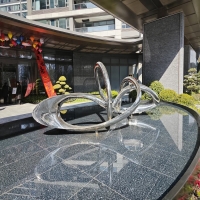Welcome to the website for landscape facilities products and knowledge.
What are the most common challenges in ensuring the table’s longevity in rental or hospitality settings?
In the demanding world of rental and hospitality operations, maintaining table longevity presents numerous complex challenges that impact both operational efficiency and customer satisfaction. The constant cycle of use, cleaning, and environmental exposure creates a perfect storm for furniture deterioration. High-frequency usage stands as the primary adversary, with tables enduring countless guest interactions, weight stresses, and accidental impacts daily. This relentless wear manifests as surface scratches, structural weakening, and compromised stability that gradually diminish both aesthetic appeal and functional integrity.
Cleaning chemicals and moisture exposure constitute another significant threat to table longevity. The rigorous sanitation protocols necessary in hospitality environments often involve harsh cleaning agents that strip protective finishes, cause discoloration, and promote wood warping or metal corrosion. This chemical assault, combined with inevitable liquid spills, creates conditions where tables deteriorate much faster than their residential counterparts. The cumulative effect of these cleaning processes gradually erodes the protective barriers that preserve table surfaces.
Environmental factors further complicate table preservation efforts. Fluctuations in temperature and humidity levels common in restaurant dining rooms, hotel lobbies, and rental venues cause materials to expand and contract, leading to joint separation, veneer peeling, and surface cracking. Sunlight exposure through windows can fade colors and weaken materials over time, while air conditioning systems create dry conditions that particularly affect wooden tables.
Cost constraints present additional hurdles for businesses seeking durable table solutions. Many establishments face budget limitations that force compromises between initial investment and long-term durability. This frequently results in purchasing tables that appear cost-effective initially but require frequent replacements or repairs, ultimately increasing long-term expenses. The challenge lies in balancing upfront costs with lifecycle value, requiring careful consideration of material quality, construction methods, and expected usage patterns.
Design trends versus durability creates another common dilemma. The pressure to maintain fashionable interiors often conflicts with practical durability requirements. Many aesthetically pleasing materials and designs prioritized for their visual appeal lack the robustness needed for commercial environments. This tension forces operators to choose between frequently updating furniture to stay current or investing in durable but potentially less trendy options that better withstand heavy use.
Transportation and storage issues particularly affect rental businesses where tables face additional hazards during moving and storage. The loading, unloading, and transportation processes introduce risks of impact damage, while improper storage conditions can lead to moisture damage, pest infestation, or stacking-related scratches. These logistical challenges require specialized handling protocols and protective measures that add operational complexity and cost.
Addressing these multifaceted challenges requires a strategic approach combining material science, maintenance protocols, and operational planning. Successful table longevity in commercial settings depends on selecting appropriate materials for specific use cases, implementing consistent maintenance schedules, training staff in proper handling techniques, and establishing clear usage guidelines. By understanding these common obstacles, hospitality and rental businesses can develop comprehensive strategies that extend furniture lifespan while maintaining aesthetic standards and controlling replacement costs.
Related search:

Recommendation
Abstract art sculpture, stainless steel metal sculpture, large-scale water feature sculpture